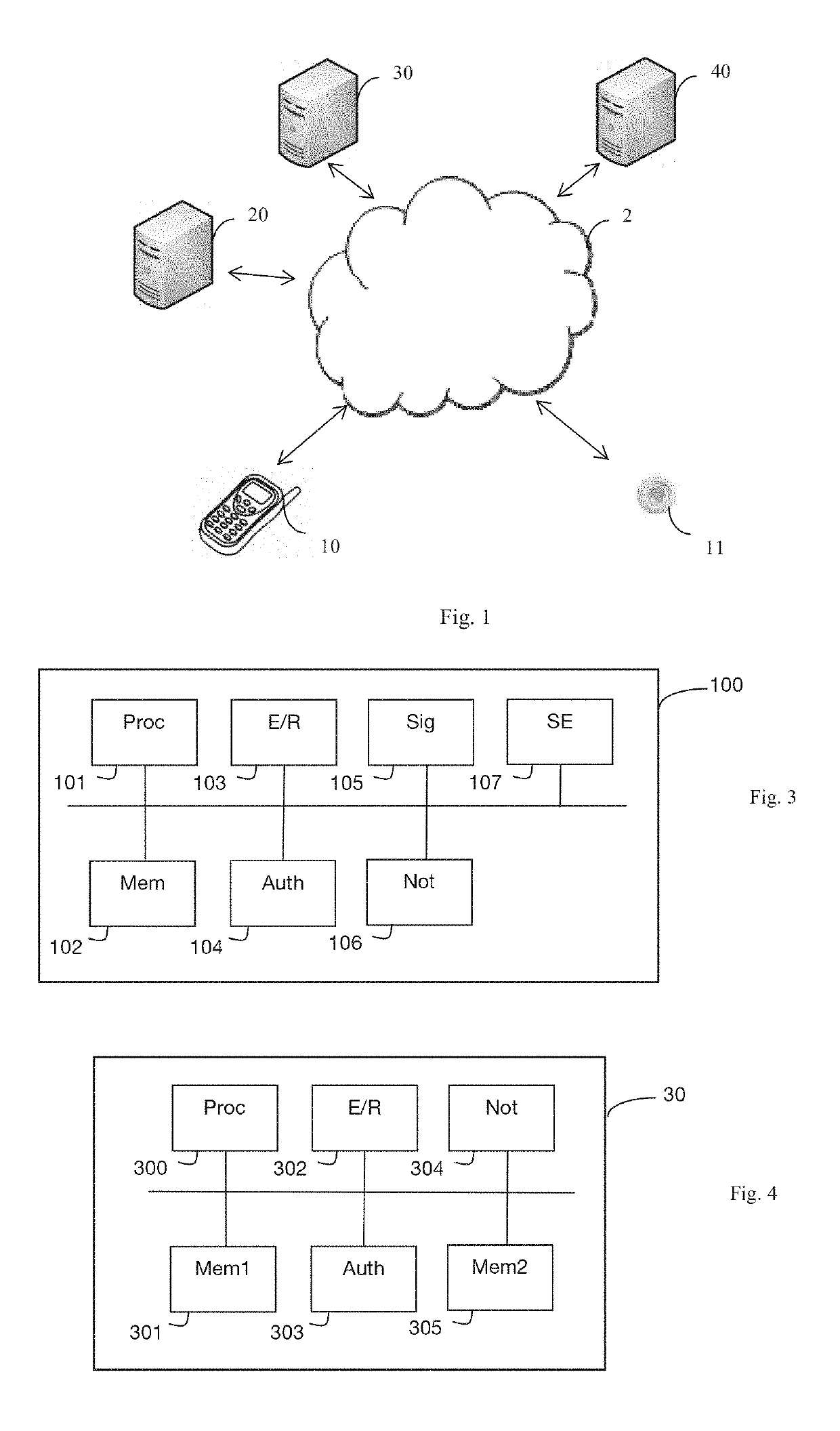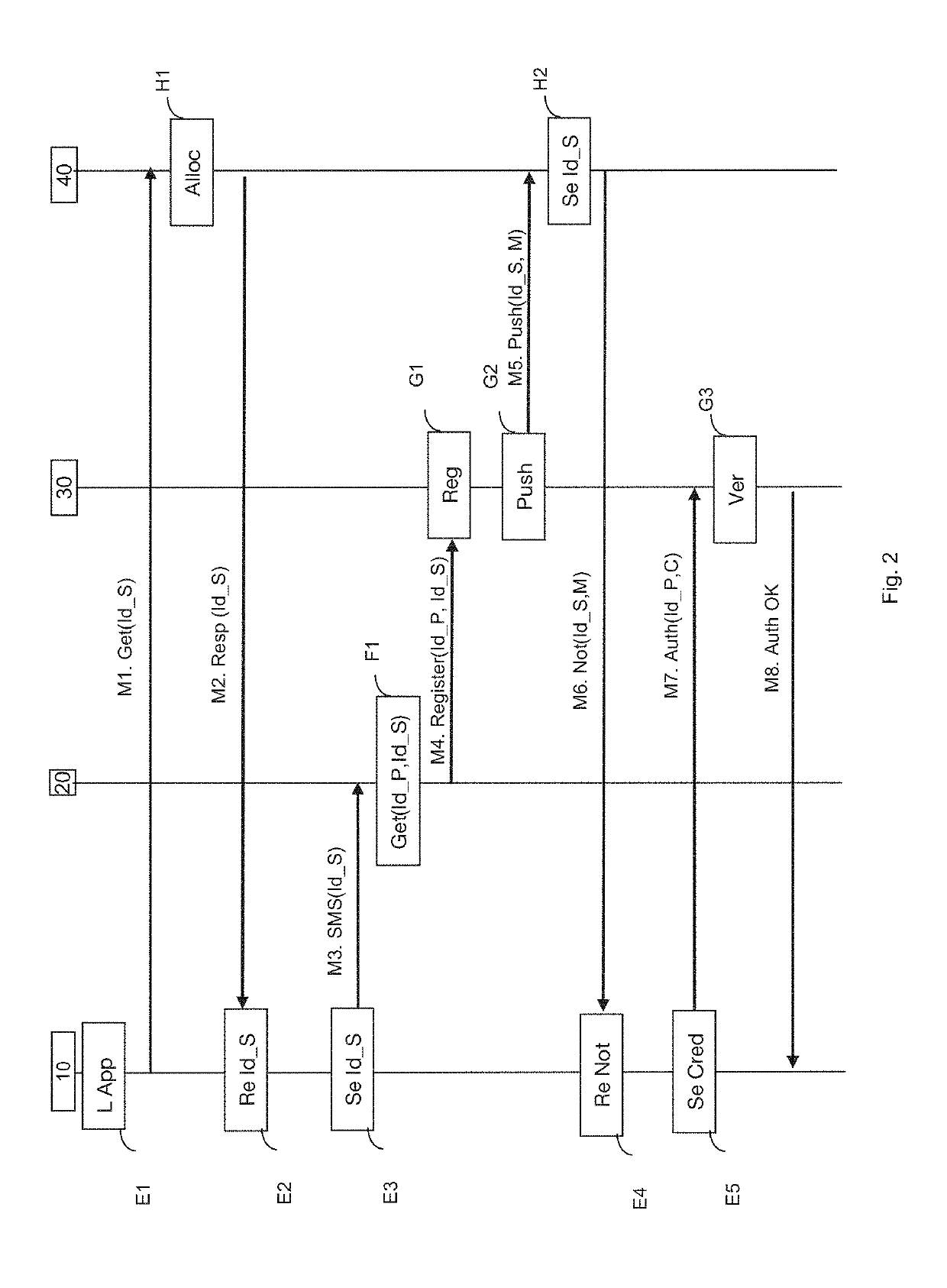Technique for authenticating a user device
a user device and authentication technology, applied in the field of telecommunications, can solve the problems of not being able to authenticate implicitly a subscriber of another operator, not being able to authenticate another user device, and not being able to guarantee that the supplied identifier actually belongs to this user
- Summary
- Abstract
- Description
- Claims
- Application Information
AI Technical Summary
Benefits of technology
Problems solved by technology
Method used
Image
Examples
Embodiment Construction
[0045]FIG. 1 shows an environment in which the method for authenticating a user device with a server implementing an application is implemented in one particular embodiment.
[0046]FIG. 1 shows two user devices 10, 11 accessing an application by way of a communication network 2. The first user device 10 is a mobile terminal connected to the communication network 2 by way of a wireless access network, such as a GSM, UMTS, LTE, etc. mobile network. This first user device 10 is equipped with a security module, associated with a subscription to which its user has subscribed with a first network operator. The second user device 11 is a connected object accessing the communication network 2 by way of a wireless access network, such as a GSM, UMTS, LTE, etc. mobile network. This second user device 11 is also equipped with a security module, associated with a subscription to which its user has subscribed with a second network operator. There is no limit attached to the number of user devices ...
PUM
 Login to View More
Login to View More Abstract
Description
Claims
Application Information
 Login to View More
Login to View More - R&D
- Intellectual Property
- Life Sciences
- Materials
- Tech Scout
- Unparalleled Data Quality
- Higher Quality Content
- 60% Fewer Hallucinations
Browse by: Latest US Patents, China's latest patents, Technical Efficacy Thesaurus, Application Domain, Technology Topic, Popular Technical Reports.
© 2025 PatSnap. All rights reserved.Legal|Privacy policy|Modern Slavery Act Transparency Statement|Sitemap|About US| Contact US: help@patsnap.com


